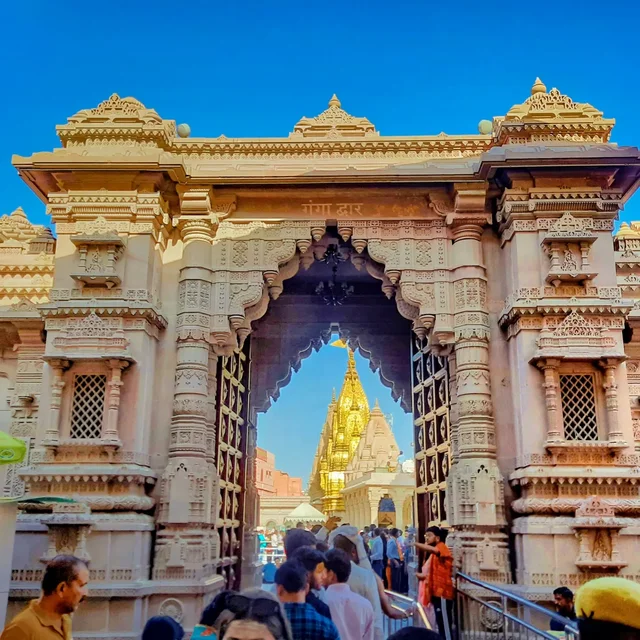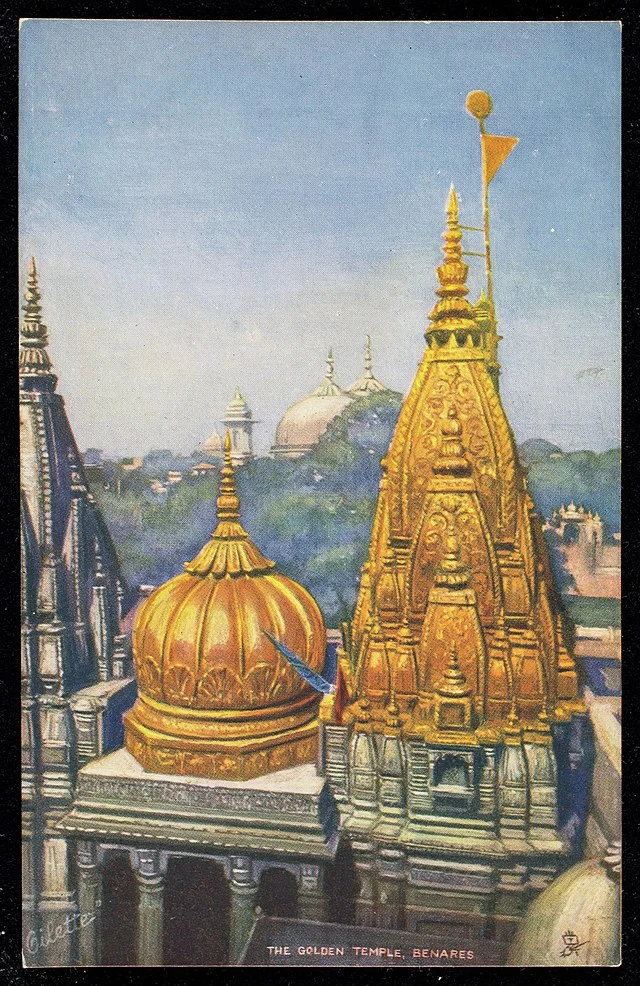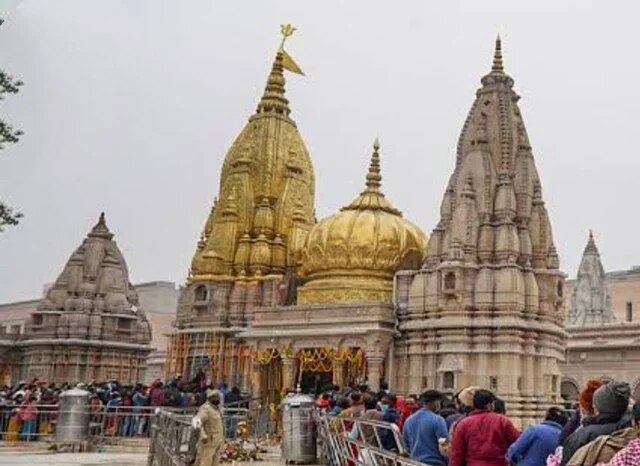The Kashi Vishwanath Temple is one of India’s most revered Hindu temples, dedicated to Lord Shiva, and located in Varanasi, Uttar Pradesh. Known as the spiritual capital of India, Varanasi holds a special place in Hindu tradition. The temple is situated on the western bank of the Ganges River, a location symbolic of purification and renewal.
Get your dose of History via Email
Historical Background

The original temple is believed to date back to ancient times, with records suggesting an establishment as early as the 11th century AD. Over centuries, the temple has been destroyed and reconstructed multiple times due to invasions, especially during the Delhi Sultanate and Mughal periods.
In 1194 AD, the temple faced its first significant destruction during the invasion of Muhammad of Ghor. However, the temple continued to be rebuilt by various Hindu patrons in subsequent years. By 1585 AD, Raja Todar Mal, a prominent courtier of the Mughal emperor Akbar, sponsored one of the reconstructions.
The most significant reconstruction happened in 1780 AD, when Ahilyabai Holkar, the queen of the Maratha-ruled Malwa kingdom, funded the construction of the temple’s current structure. Ahilyabai’s restoration has largely shaped the temple’s current design, with subsequent renovations and additions funded by various patrons, especially from the Maratha and Sikh communities.
Architectural Features

The Kashi Vishwanath Temple’s architecture reflects the Nagara style, characterized by intricate carvings and a towering spire (shikhara). The temple’s spire is gold-plated, a contribution by Maharaja Ranjit Singh of Punjab in the 19th century AD, adding both grandeur and a symbol of reverence.
Inside the temple, the main deity is a Shiva lingam, symbolizing Lord Shiva’s eternal presence. Unlike many other Hindu temples, which have elaborate interior layouts, the Kashi Vishwanath Temple’s simplicity focuses attention on the lingam, encouraging direct worship and meditation.
The temple complex includes smaller shrines dedicated to other Hindu deities, including Vishnu, Parvati, and Ganesha. These shrines represent various aspects of Hindu mythology and connect Kashi Vishwanath Temple to a broader pantheon of worship within Hinduism.
Religious Significance

Kashi Vishwanath Temple holds immense importance within the Shaivism tradition, the sect dedicated to Lord Shiva. Hindu devotees believe that visiting the temple and bathing in the Ganges nearby purifies one’s soul and helps achieve moksha, or liberation from the cycle of rebirth. This belief aligns with the concept of Kashi as a sacred city and Lord Shiva as the divine protector who offers liberation.
The temple is one of the twelve Jyotirlingas, a sacred set of Shiva temples spread across India, making it a vital pilgrimage destination. According to Hindu texts, Lord Shiva himself declared Varanasi his earthly abode, adding further significance to the temple.
The Gyanvapi Mosque Controversy
Adjacent to the Kashi Vishwanath Temple is the Gyanvapi Mosque, built during the rule of the Mughal Emperor Aurangzeb in 1669 AD. Aurangzeb ordered the demolition of a portion of the Kashi Vishwanath Temple, and the Gyanvapi Mosque was constructed on the original temple site. This history has fueled longstanding tensions, as devotees claim that part of the temple was lost in this destruction. Over the years, the mosque and temple complex have been subjects of political and religious contention, leading to restricted access to certain areas and increased security measures.
Recent Developments and Renovations
In recent years, the Kashi Vishwanath Temple has undergone significant development under the Kashi Vishwanath Corridor Project, launched in 2019. This initiative aimed to improve access to the temple, expand the surrounding infrastructure, and enhance facilities for pilgrims. The project involved demolishing surrounding buildings and expanding the temple complex, providing a direct and unhindered path from the Ganges River to the temple.
The corridor project, completed in 2021, has transformed the temple complex, adding facilities like museums, viewing galleries, and a paved pathway for visitors. While this development has improved accessibility, it has also sparked debates regarding heritage conservation and urban renewal.
Conclusion
The Kashi Vishwanath Temple remains a symbol of resilience and devotion in Hinduism, continuing to attract millions of pilgrims each year. The temple’s historical journey reflects centuries of cultural evolution, conflict, and religious revival. Today, the Kashi Vishwanath Temple stands as both a sacred space and a testament to the dynamic history of Varanasi, embodying the spiritual heart of India.
Source:

